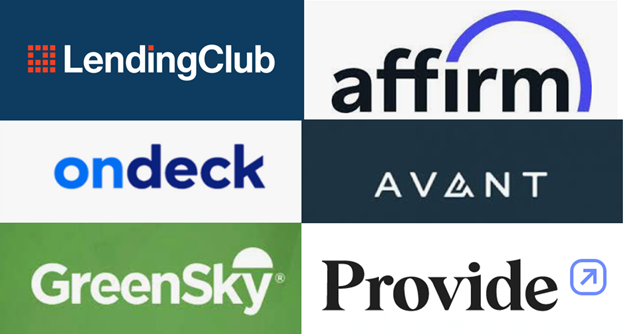
If you want to constantly produce top quartile returns, you have to find at least one “return the fund” (RTF) investment every fund.
Here’s a simple exercise that’s helped me spot 1-2 RTFs every fund:
Here’s a simple exercise that’s helped me spot 1-2 RTFs every fund:

2/20: Step 1: Run the Math
It always starts with sizing what a company’s enterprise valuation has to look like upon exit for it to become a RTF investment. Fund strategy and size dictate what type of game you need to hunt.
It always starts with sizing what a company’s enterprise valuation has to look like upon exit for it to become a RTF investment. Fund strategy and size dictate what type of game you need to hunt.
3/20: Having an investment RTF within a portfolio that has a small number of logos w/follow-on capital concentrated in the better companies is a different challenge than having an angel investment RTF in a “One check and done” portfolio.
4/20: Typical fund example (simplified):
$200MM early stage portfolio with 20 companies
10 Companies @ $5MM
5 Companies @ $5MM + $5MM follow on
5 Companies @ $5MM + $15MM follow on
You need your best company with concentrated dollars at work to return 10X to RTF
$200MM early stage portfolio with 20 companies
10 Companies @ $5MM
5 Companies @ $5MM + $5MM follow on
5 Companies @ $5MM + $15MM follow on
You need your best company with concentrated dollars at work to return 10X to RTF
5/20: But it’s not only about needing to return 10X, it’s what the 10X represents that’s equally important. It represents $200MM of “end state ownership” in a company. So what matters is what your investment dollars buys of the end state inclusive of dilution.
6/20: This is where you need to understand your fund strategy and ability to spot great capital efficient opportunities while their valuations are still low.
In the example, if a fund can invest $20MM to buy 10% of the end state then the company needs to exit at $2B to RTF.
In the example, if a fund can invest $20MM to buy 10% of the end state then the company needs to exit at $2B to RTF.
7/20: A portfolio with 2X the companies and no follow-ons (one check and done) has 2X the opportunity to spot a great company but the exit value will need to be greater than 2X (factoring in dilution) to RTF.
End state ownership might imply the exit needs to be $5-$6B to RTF!
End state ownership might imply the exit needs to be $5-$6B to RTF!
8/20: Step 2: End-state Analysis
Once you know what the exit valuation on a company needs to be to RTF, the next obvious question you need to answer is whether or a company can grow into this exit valuation.
Once you know what the exit valuation on a company needs to be to RTF, the next obvious question you need to answer is whether or a company can grow into this exit valuation.
9/20: Many investors ignore this step using the lazy argument that “TAM is plenty big to build a gigantic company and the company’s model is still being developed so any analysis on the future state of the company is fatally flawed.” Hogwash!
10/20: It’s not about precision. It’s about understanding the dynamics of the industry. It’s about how companies are valued. It’s about how many zeros of contribution margin a typical consumer will deliver. It’s about how much of the market a dominant company could serve.
11/20: For instance, you might conclude the following:
$2B exit = $200MM of high margin revenue
A typical customer will contribute $200 of revenue so 1MM customers are needed
20MM customers are “in play” each year and the top 3 market leaders capture 60% of this volume
$2B exit = $200MM of high margin revenue
A typical customer will contribute $200 of revenue so 1MM customers are needed
20MM customers are “in play” each year and the top 3 market leaders capture 60% of this volume
12/20: Do you believe that the company can capture 10% of the “in play” volume? Can it capture 25% of the volume not won by the top 3 market leaders?
A “yes” answer implies that the company has the potential to RTF.
A “yes” answer implies that the company has the potential to RTF.
13/20: The big X-Factor in today’s market is whether or not valuation multiples will hold or will revert to historic norms. My personal advice is to assume some reversion to the mean when evaluating companies but this is a judgment call that might be wrong.
14/20: To be clear, there are companies that have the potential to completely reinvent an industry which makes future casting difficult. But it doesn’t mean the exercise isn’t valuable. It level sets you as an investor on “what you have to believe” when you write a check.
15/20: Step 3: Connect the dots
The more you understand the ecosystem and the incumbents, the more accurately you can identify and play out the most likely future states. Serving an ecosystem would be simple if actions didn’t result in reactions.
The more you understand the ecosystem and the incumbents, the more accurately you can identify and play out the most likely future states. Serving an ecosystem would be simple if actions didn’t result in reactions.
16/20: When there are few enough market participants such their actions individually matter you can study their potential strategic moves and how they will impact the ecosystem and your potential investment. Knowing people at these companies and how they think can be helpful!
17/20: Some moves inspire an entire ecosystem to change and these moves are critical to understand. Pricing and margins can collapse if a major incumbent decides to cut price. Revenue streams could disappear or new regulations enacted that crush emerging startups.
18/20: When there are many market participants such that no single company has enough power to move a market you can assume that the market will evolve gradually. In these cases it’s important to be realistic about how much market share is available to pick up and at what pace.
19/20: Once you have a pretty good handle on the most likely potential future states, you can overlay what you’ve learned in Steps 1 and 2 to determine how possible it will be for a startup to achieve what it needs to achieve to produce a RTF investment for your fund.
20/20: This is a skill that takes practice to master and is just a gigantic game of articulating “what I have to believe”. Precision isn’t possible because none of us are Zoltar.
Triangulating outcomes, articulating risks and clarity of thinking are what matter most.
Triangulating outcomes, articulating risks and clarity of thinking are what matter most.
• • •
Missing some Tweet in this thread? You can try to
force a refresh











